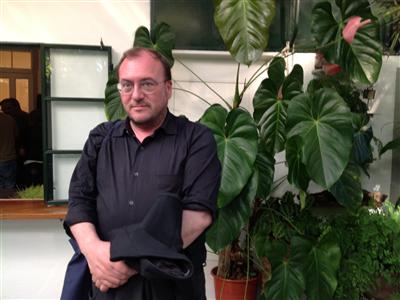
João Fernandes is the current sub director of the National Art Museum Reina Sofia in Madrid and was for several years the artistic director of the Serralves Museum in Oporto. A career that allows him to reflect on the present and future of museums.
You claimed that museums are no longer places of knowledge rather places of information. There is a contradiction given that politicians tend to cut spending on culture, precisely because they provoke critical thinking?
John Fernandes: I will not say that the museum is not a place of knowledge, continues to have this function to build collections of protecting them, present them so that they can function as detonators of thought. But what happens is the transformation of the museum as a space for mediation with its visitor, it is colonized by a pedagogical discourse where information dominates over the construction of knowledge. This space is also done with emotions with an aesthetic relationship with a sensory and conceptual seizure and a reflection from the artwork. And instead, it reduces this interpretation by the viewer due to the time that takes to read its own explanation. Today visiting a museum is also clashes with texts that seek to respond to something that the viewer wants that is an explanation for what they see. And I think we should not even try to offer that because the work does not require an explanation. Sometimes the information is such that it takes away the need from the viewer to build their own construction.
Yes, but it happens in most contemporary art, but for the works of earlier periods this explanation is almost irrelevant, since many artists painted what they saw.
JF: Maybe they do need them because the viewer does not need to know anything about the era in which these works were painted, or the codes that were used. When you look at a Flemish primitive painting, or an Italian Renaissance, they were dress codes to represent certain types of figures, if the viewer does not master this language does not get there. For example, a saint with a tower beside, if they do not know the history of Santa Barbara cannot connect the tower to the figure. Any work of art inquiries, construction of knowledge, but it is up to the viewer to be neither lazy nor cowardly, nor shy. Must confront with the work of art because it is a personal confrontation. When I said the phrase of Franz Fannon, from the 60's, saying that the viewer was a coward and a traitor, I was referring to the viewer lesser responsibility to even sees the artwork. People often go to a museum to tell they are there and all the contemporary society is increasingly so, invites people to be just passive spectators in their relationship with the artwork. The museum precisely instead of worrying only invite viewers for statistical purposes, should be concerned primarily with the relation that same viewer has with the museum and how it can acquire knowledge in confrontation with the artwork.
This is one of the current challenges of museums to attract the public, there are not only places to acquire knowledge, but also pedagogical spaces and places for other types of cultural events. So what is the future?
JF: The future of museums will be what its collections, its directors and the society determine where they are inserted. I do not know what the future is, I know what I'm building at the museum where I work. But no one can answer that. There are situations, today, that derive from these models of financing institutions that can interrogate. The museums are to be privatized in the contemporary world and its forms of finance and this sometimes affects their own function. The museum is a public service must continue to be so and it is a right of citizenship. It is no coincidence that the museum in the sense that we ascribe it arises in the context of the installation of the republic with the palace of the Louvre making accessible the collections of the royal family to all French citizens.
Regarding the privatization of museums you focused on the art collectors, in more contemporary art, they almost decide the artists worth investing on.
JF: I spoke of something that happens mainly in American museums, where the capacity to decide on the collections today is much more taken by collectors who fund these institutions than actually the curators of the museums.
That's what you mean about the privatization of museums?
JF: Yes, and also another equation that is the collectors streamline many of today's contemporary art museums. Are themselves creating their own private museums for their collections.
That is already a reality in Spain through the collection Thyssen?
JF: No, this is another museum. The Thyssen is paid by the Spanish state. It is a collection of a private person at public expense. In Spain the museums are publicly funded and are as throughout Europe to diversify its sources of financing with private funds. The Reina Sofia and Prado have the ability to create foundations to manage a mixed forms for their funding. But there are no private museums in Europe which are an example, we are talking about the Americans and Asians. Today the great momentum that's happening in museums happens outside Europe.
This model could be carry for the Portuguese case, since there is a patent lack of patronage in our country.









